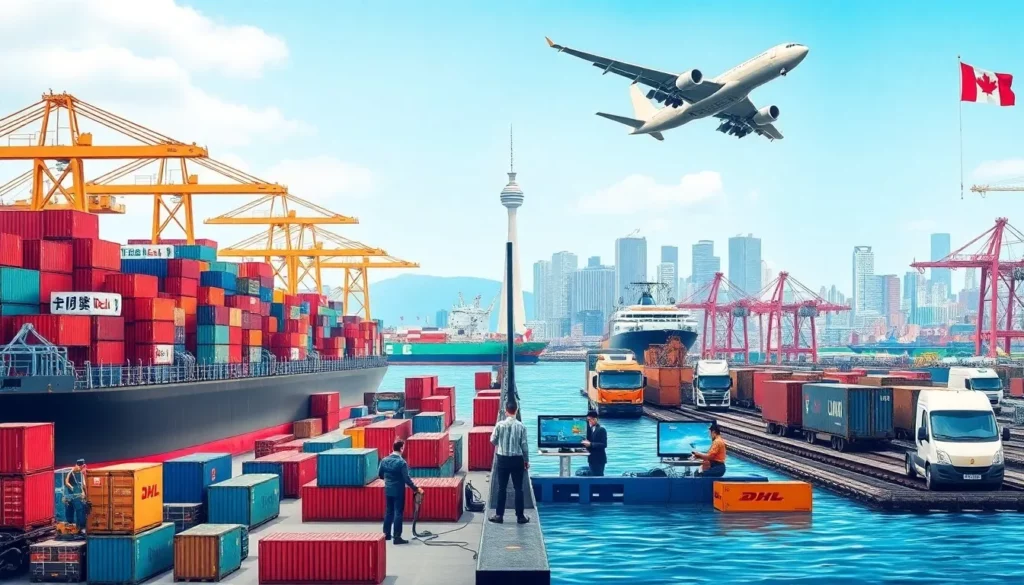As a Canadian importer, partnering with a reliable freight forwarder can streamline your operations and cut costs. This guide equips you with the knowledge to select top-tier freight forwarding services for shipments from China to Canada. You’ll learn how to assess carrier networks, customs expertise, and technology platforms to make informed decisions.
Most Important: A dependable freight forwarder offers robust logistics solutions, including customs clearance, strong carrier partnerships, and real-time shipment tracking. Prioritize providers with proven experience in Canada and advanced technology for seamless operations.
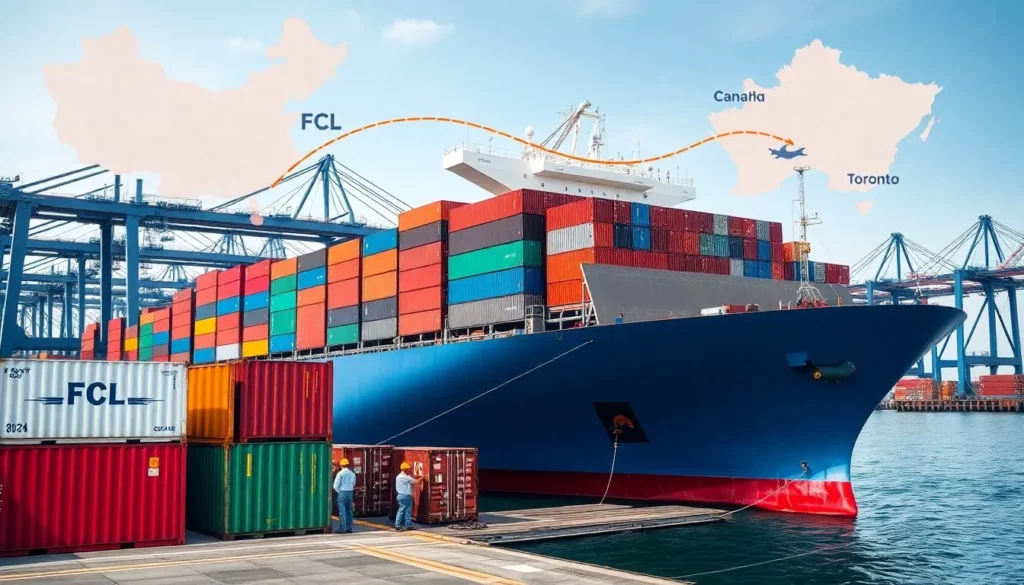
Core Shipping Methods: Comparing Options for China to Canada
Sea Freight: Cost-Effective for Bulk Shipments
For large-volume imports, sea freight is your go-to for affordability, though it requires longer transit times. It’s perfect for businesses importing bulk goods like furniture or non-urgent inventory.
Full Container Load (FCL) Shipping
With FCL, you reserve an entire 20- or 40-foot container for your goods, paying for the full space regardless of usage. This method ensures better security and faster transit than shared shipments.
- Current FCL rates:
- Shanghai to Vancouver: ~$3,150 for a 40-foot container.
- Shenzhen to Vancouver: ~$3,850 for a 40-foot container.
- Range: $1,150–$8,500 based on size and route.
Tips: FCL is ideal for high-volume shipments where security and speed outweigh partial container savings.
Less than Container Load (LCL) Shipping
LCL lets you share container space with other importers, making it cost-effective for smaller shipments. Your goods are consolidated at the origin port and separated at the destination, adding handling time.
- LCL rates: $150–$400 per cubic meter, depending on route and demand.
- Transit time: Adds 5–10 days compared to FCL due to consolidation.
Best practices: Use LCL for smaller orders but plan for extra transit time to avoid delays.
Sea Freight Transit Times
Transit times depend on the port of origin and destination in Canada. Here’s a breakdown:
| Route | FCL Transit Time | LCL Transit Time |
|---|---|---|
| Shanghai to Vancouver | 25–30 days | 30–38 days |
| Shenzhen to Toronto (via Vancouver) | 32–42 days | 37–48 days |
| Ningbo to Montreal | 30–40 days | 35–45 days |
| Qingdao to Halifax | 28–38 days | 33–44 days |
Important warnings: These times include ocean transit and potential inland transport. Delays may occur during peak seasons like Chinese New Year.
When to Choose Sea Freight
Sea freight suits large-volume, cost-sensitive, or non-urgent shipments like raw materials or seasonal retail stock. It’s less suitable for perishables or time-critical electronics.
Example: A furniture importer I worked with saved 40% by switching to FCL for bulk shipments, though they planned orders three months ahead to account for transit times.
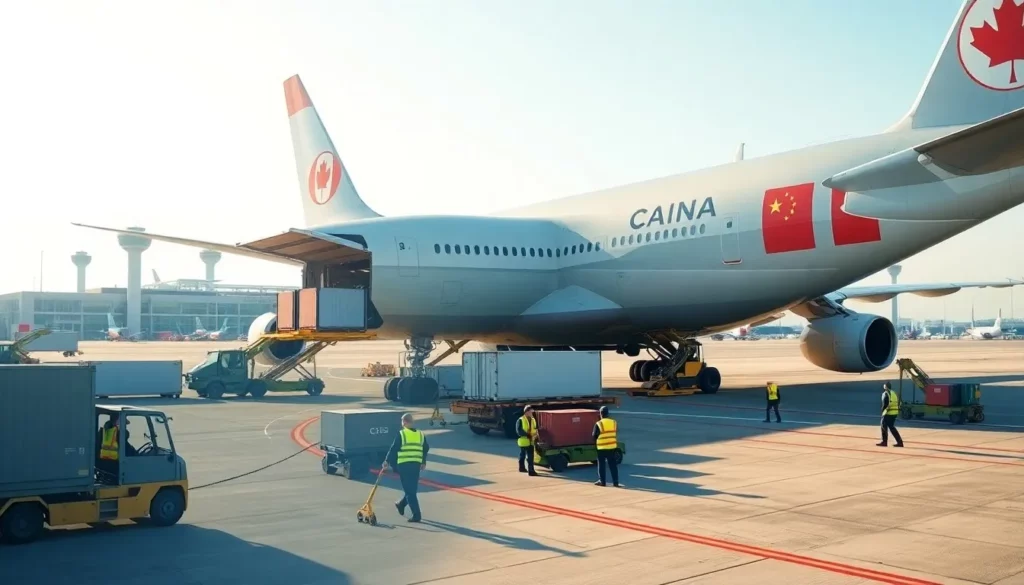
Air Freight: Speed for High-Value Goods
Air freight is the fastest way to ship from China to Canada, with transit times of 5–12 days. It’s ideal for high-value or urgent goods where speed justifies the higher cost.
Standard vs. Express Air Freight
- Standard air freight: 5–10 days, $5–$12 per kilogram.
- Express air freight: 2–5 days, $6–$15 per kilogram, with door-to-door delivery and enhanced tracking.
Sample costs (100kg shipment, Shanghai to Toronto):
- Standard: $1,068–$1,423, 6–10 days.
- Express: $1,193–$1,591, 3–6 days.
Tips: Choose express for urgent product launches to meet tight market deadlines.
Air Freight Transit Times
Transit times include:
- Export customs clearance: 1–3 days.
- Flight duration: 1–2 days.
- Import clearance and delivery: 2–7 days.
Routes like Shanghai to Toronto or Guangzhou to Vancouver typically take 6–9 days. Weather, flight schedules, or peak seasons (e.g., Golden Week) may extend timelines.
When to Use Air Freight
Air freight is cost-effective for high-value goods like electronics or pharmaceuticals, where inventory holding costs outweigh transport expenses. It’s also great for urgent spare parts or fashion items.
Example: An e-commerce client used express air freight to rush seasonal apparel to Canada, capturing a 20% sales boost by hitting market windows.
E-commerce and Time-Sensitive Needs
For e-commerce sellers, air freight ensures rapid inventory replenishment. Manufacturers rely on it for prototypes or parts to avoid production halts.
Best practices: Calculate total landed costs, including inventory carrying expenses, to confirm air freight’s value.

Express Courier Services: Small, Urgent Shipments
Express couriers like DHL, FedEx, and UPS offer door-to-door delivery for small shipments (under 68kg) with guaranteed timelines.
Comparing Major Carriers
- DHL: Strong Asia-Pacific connectivity, ideal for documents and small parcels.
- FedEx: Reliable with robust North American networks.
- UPS: Offers integrated logistics beyond basic shipping.
Rates: $13–$18 per kilogram for 0.5–10kg shipments.
Benefits of Door-to-Door Service
Express services handle pickup, customs clearance, international transport, and final delivery. They include insurance and real-time tracking, simplifying logistics but at a premium price.
Tips: Use express for high-value samples or urgent customer orders to maintain satisfaction.
Delivery Times and Costs
- Delivery time: 3–7 days (faster for major cities, slower for rural areas).
- Cost factors: Base rates, fuel surcharges, remote area fees, duties/taxes, and peak-season surcharges.
Important warnings: Oversized or heavy packages may incur extra fees, so confirm dimensions upfront.
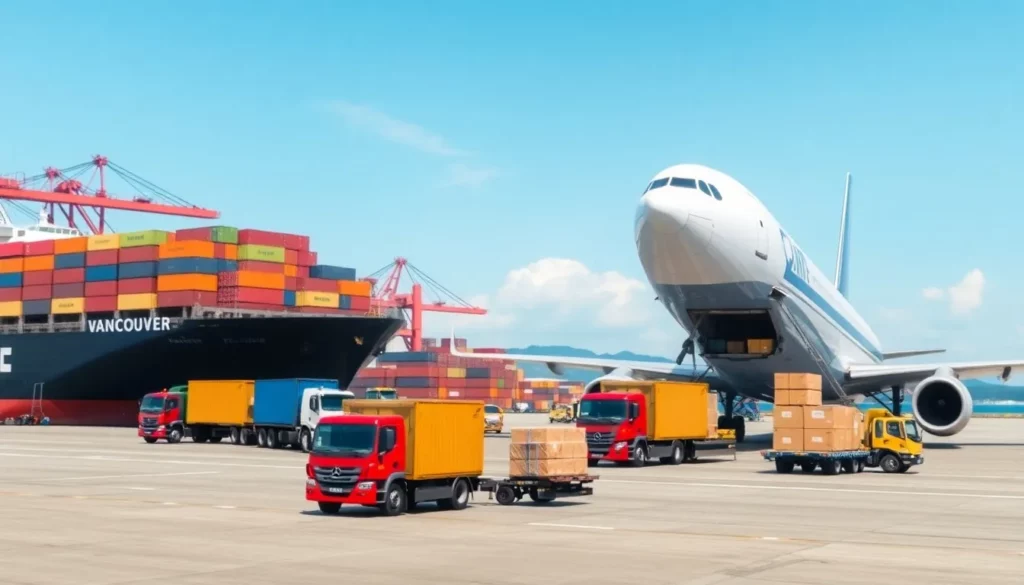
Multimodal Shipping: Balancing Cost and Speed
Multimodal shipping combines sea and air transport to optimize cost and time, offering flexibility for complex supply chains.
How Sea-Air Solutions Work
Goods travel by sea from China to an intermediate hub (e.g., Vancouver), then by air to the final destination. Transit times range from 12–18 days, blending sea’s affordability with air’s speed.
Example: A retailer shipping electronics to Toronto used sea-air via Vancouver, cutting costs by 30% compared to full air freight while delivering in 15 days.
When to Choose Multimodal
Multimodal is ideal for:
- Medium-urgency shipments too time-sensitive for sea freight.
- Seasonal goods with specific delivery windows.
- Mixed shipments with varying urgency levels.
Best practices: Coordinate with forwarders to ensure smooth transitions between transport modes.
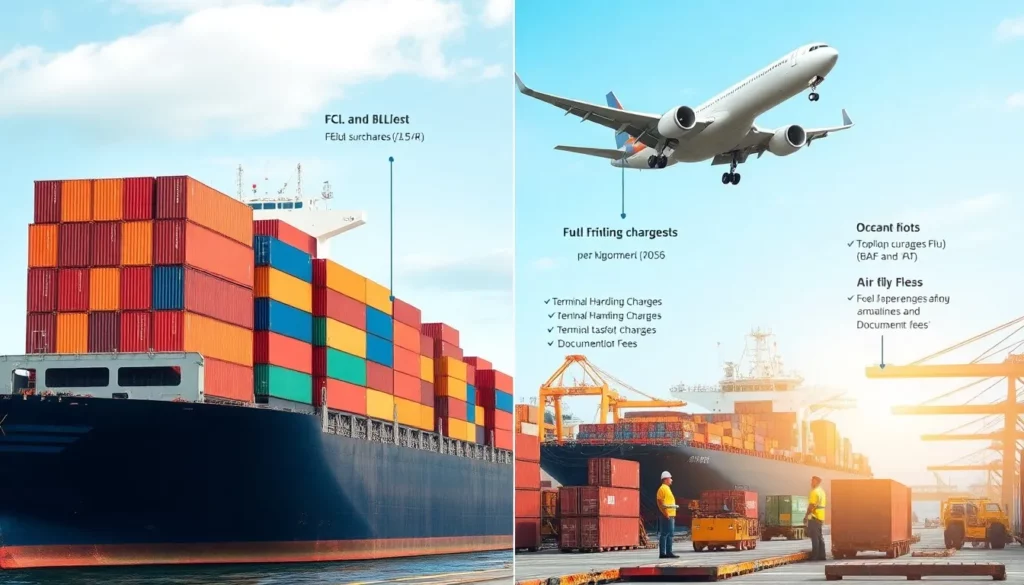
Calculating Your Total Landed Cost
Breaking Down Freight Quotes
Freight quotes include more than just transport fees. Understanding all components helps you budget accurately.
Ocean and Air Freight Charges
- Ocean freight: Quoted per container (FCL) or cubic meter (LCL).
- Air freight: Quoted per kilogram, with minimum charges for small shipments.
Important warnings: Rates fluctuate with market demand and peak seasons. Book early to lock in rates.
Fuel Surcharges
- Bunker Adjustment Factor (BAF): Ocean freight, $100–$300 per container.
- Fuel Adjustment Factor (FAF): Air freight, adds 10–20% to base rates.
Tips: Monitor monthly fuel surcharge updates to avoid budget surprises.
Terminal Handling Charges
- Ocean freight: $150–$400 per container.
- Air freight: $0.50–$2.00 per kilogram.
These mandatory fees cover port or airport cargo processing.
Documentation and Ancillary Fees
- Documentation: $50–$150 for bills of lading, customs declarations, etc.
- Other fees: Cargo insurance, inspections, or customs exams.
Best practices: Request itemized quotes to catch hidden costs early.
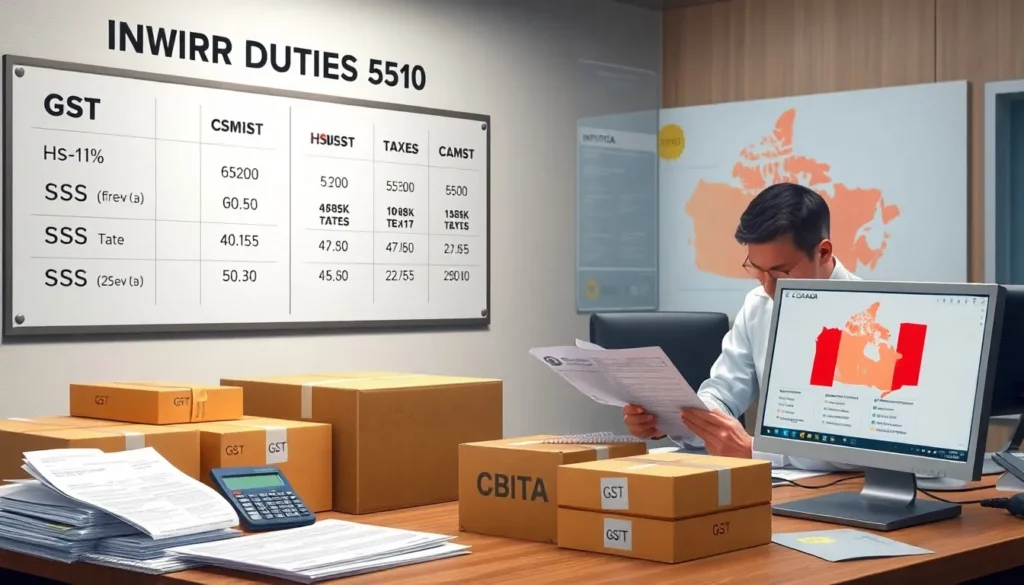
Canadian Import Duties and Taxes
Duties and taxes depend on your goods’ classification and origin, impacting your total costs.
Harmonized System (HS) Codes
HS codes determine duty rates. Canada uses a 10-digit system for precise classification.
Important warnings: Incorrect HS codes can lead to overpayment or penalties. Consult a customs broker for accuracy.
GST and Provincial Taxes
- GST: 5% federal tax on duty-paid value plus duties and transport costs.
- HST/PST: Varies by province (13–15% for HST; some provinces exempt business purchases).
Duty Relief Programs
Canada offers programs like temporary admission or duty drawbacks for qualifying imports. Contact the CBSA or a broker to explore eligibility.
Tips: Accurate HS codes and program applications can save thousands in duties.
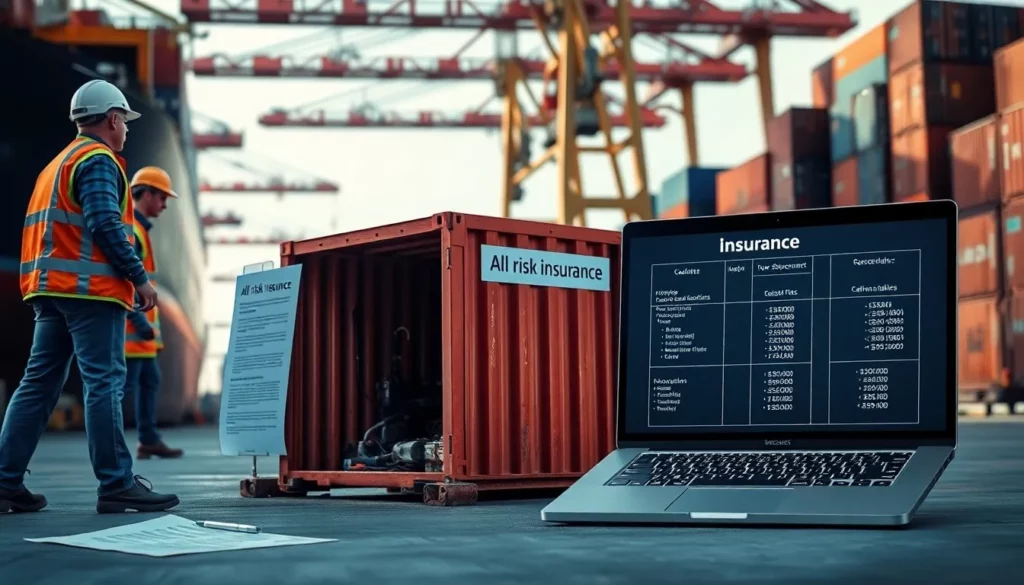
Cargo Insurance Costs
Insurance protects against transit risks like damage or theft, a must for B2B shipments.
Why Insurance Matters
Carrier liability is limited, and disruptions can cost more than your cargo’s value. Insurance ensures comprehensive coverage.
Example: A client avoided a $50,000 loss on damaged electronics by securing all-risk insurance, which covered replacement costs.
Calculating Premiums
- Rate: 0.1–0.5% of cargo value (higher for fragile/high-risk goods).
- Basis: Cargo value + 10% for profit/losses.
- Modes: Ocean freight insurance is cheaper than air.
Coverage Types
- All-risk: Comprehensive, best for high-value goods.
- Named perils: Covers specific risks, cheaper for low-risk cargo.
- Total loss: Basic, only for complete cargo loss.
Best practices: Opt for all-risk coverage for electronics or fragile items.
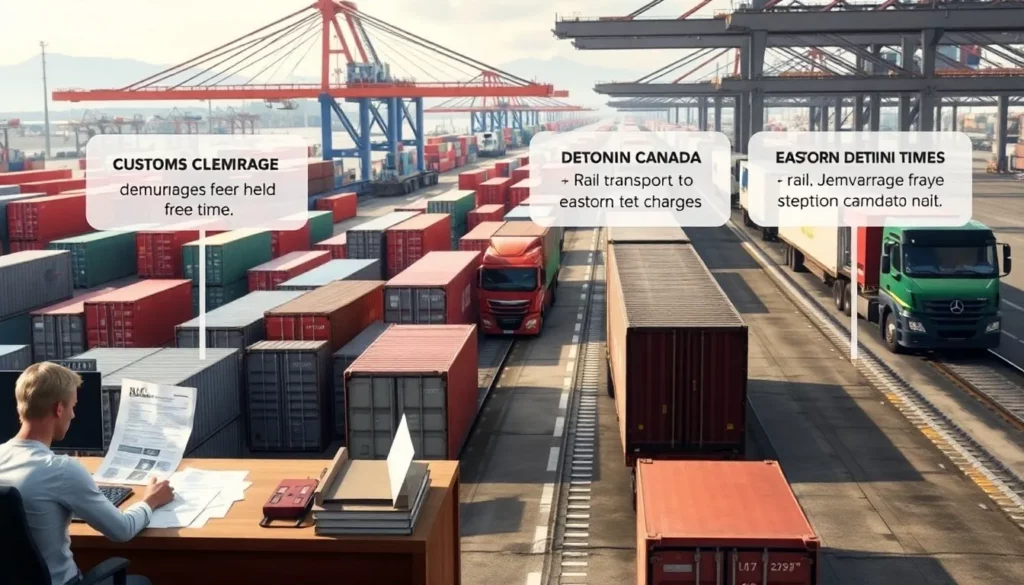
Other Costs to Budget
Customs Brokerage Fees
- Cost: $75–$200 per shipment, higher for complex cases.
- Value: Brokers ensure compliance and reduce clearance delays.
Demurrage and Detention
- Demurrage: $75–$200/day for containers held at terminals beyond free time (3–7 days).
- Detention: Fees for containers held outside terminals.
Important warnings: Plan pickups to avoid these costly charges.
Inland Transportation
- Rail: 4–7 days from Vancouver to eastern Canada, cost-effective for long distances.
- Truck: Flexible but pricier for remote destinations.
Tips: Choose ports like Montreal for eastern deliveries to minimize inland costs.

Canadian Customs and Documentation
Essential Documents
Accurate documentation ensures smooth customs clearance.
Commercial Invoice
Include buyer/seller details, product descriptions, values, and Incoterms. Use English or provide certified translations.
Best practices: Match invoice totals with other documents to avoid discrepancies.
Bill of Lading (B/L) or Air Waybill (AWB)
- B/L: Ocean freight contract, can be negotiable.
- AWB: Non-negotiable air freight document.
Ensure consignee details align with import permits.
Packing List
Details package counts, weights, dimensions, and markings. Specify wood packaging for fumigation certificates.
Certificate of Origin
Confirms goods’ manufacturing origin for duty reductions under trade agreements. Apply through Chinese authorities like CCPIT.
Tips: Early certificate applications prevent clearance delays.
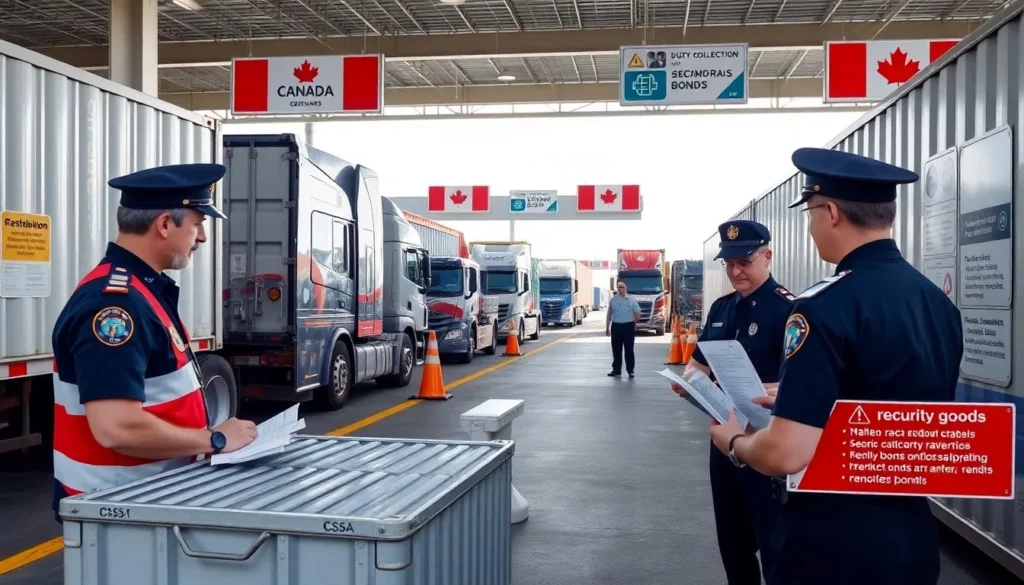
Canada Border Services Agency (CBSA)
CBSA’s Role
The CBSA enforces customs laws, collects duties, and examines shipments. Officers have final authority on duty rates and admissibility.
CARM System
Mandatory since October 2024, CARM streamlines duty/tax reporting. Register and provide security bonds ($5,000 minimum or 50% of monthly duties/taxes).
Prohibited/Restricted Goods
Prohibited items (e.g., certain weapons) are banned. Restricted goods (e.g., food, chemicals) need permits.
Important warnings: Check CBSA guidelines to avoid seizures or penalties.

Using a Customs Broker
Benefits
Brokers handle declarations, duty calculations, and CBSA communications, saving time and ensuring compliance.
Choosing a Broker
Select based on CBSA licensing, industry experience, and technology. Compare fees and communication responsiveness.
Importer Responsibilities
As the importer of record, you’re liable for accurate declarations and payments. Maintain oversight even with a broker.
Best practices: Keep detailed records for audits and compliance.

Choosing the Right Freight Forwarder
Evaluation Criteria
Licensing and Certifications
Verify NVOCC registration for ocean freight and FIATA membership for professional standards. Check insurance coverage.
China-Canada Experience
Choose forwarders with established offices in both countries and industry-specific expertise. Request client references.
Network and Partnerships
Strong carrier relationships ensure capacity and competitive rates. Assess coverage for major ports and inland destinations.
Communication and Technology
Look for responsive service, multilingual support, and real-time tracking platforms.
Tips: Test responsiveness during the quote process to gauge future service quality.
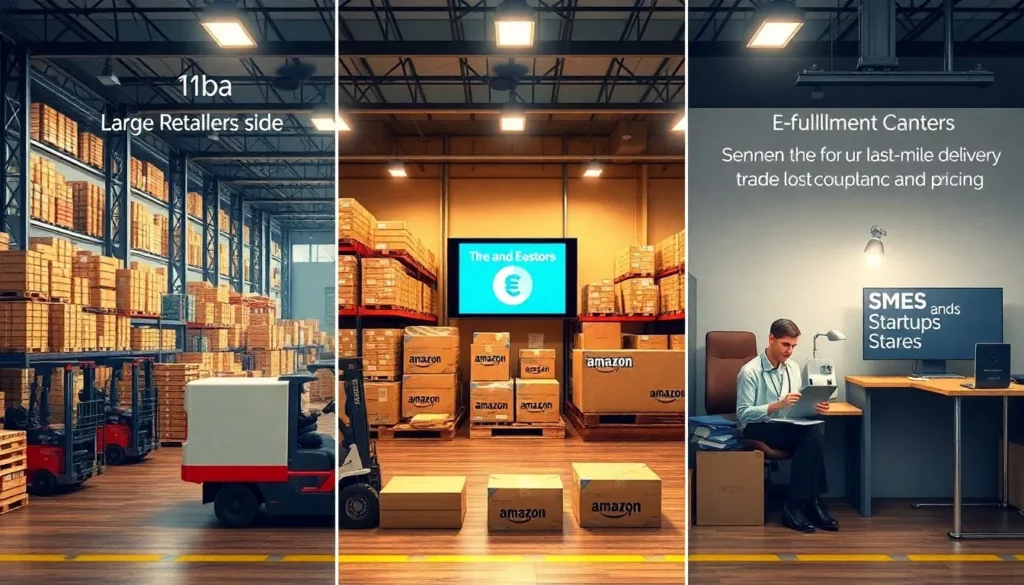
Tailoring to Your Business
Large Retailers
Seek forwarders with scalable operations, volume pricing, and warehouse integration. EDI support streamlines high-volume logistics.
E-commerce Brands
Prioritize e-fulfillment integration and last-mile delivery options. Amazon FBA compliance is a plus.
SMEs and Startups
Choose forwarders offering flexible services and educational support to navigate trade complexities.
Example: A startup client I advised saved 15% by selecting a forwarder with tailored SME pricing and compliance guidance.

Red Flags to Avoid
Vague or Low Quotes
Unrealistically low quotes may hide fees or indicate poor service. Demand itemized breakdowns.
Poor Communication
Unresponsive or unclear communication signals unreliable service. Expect regular updates and transparency.
No References
Lack of testimonials or case studies suggests inexperience. Check reviews and industry reputation.
Important warnings: Avoid forwarders with unverifiable credentials to protect your supply chain.
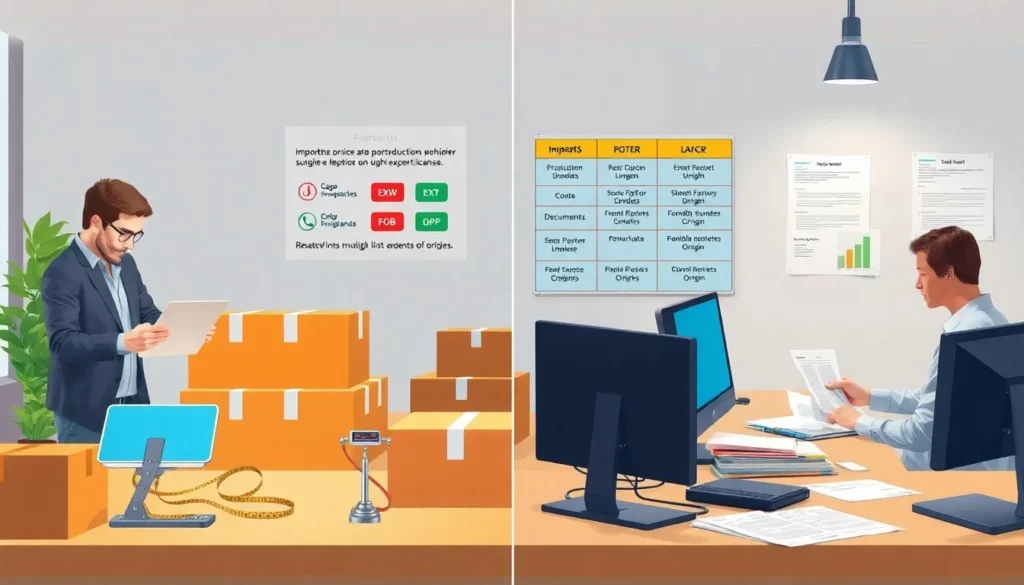
Step-by-Step Import Process
Phase 1: Pre-Shipment Planning
Supplier Coordination
Confirm supplier production schedules, quality controls, and export licenses. Align on documentation and Incoterms.
Cargo Measurements
Verify weights, dimensions, and packaging to ensure accurate quotes and space allocation.
Choosing Incoterms
- EXW: You control costs but manage all logistics.
- FOB: Seller handles port delivery; you manage main transport.
- DDP: Seller covers everything, but costs are higher.
Tips: FOB is beginner-friendly for balanced control and responsibility.
Phase 2: Booking and Documentation
Comparing Quotes
Request detailed quotes from multiple forwarders, comparing total costs and transit times. Confirm validity periods.
Gathering Documents
Prepare commercial invoices, packing lists, and certificates of origin. Ensure accuracy and consistency.
Certificate of Origin
Apply early for trade agreement benefits. Match descriptions with invoices.
Best practices: Electronic documents speed up processing but must meet specific formats.
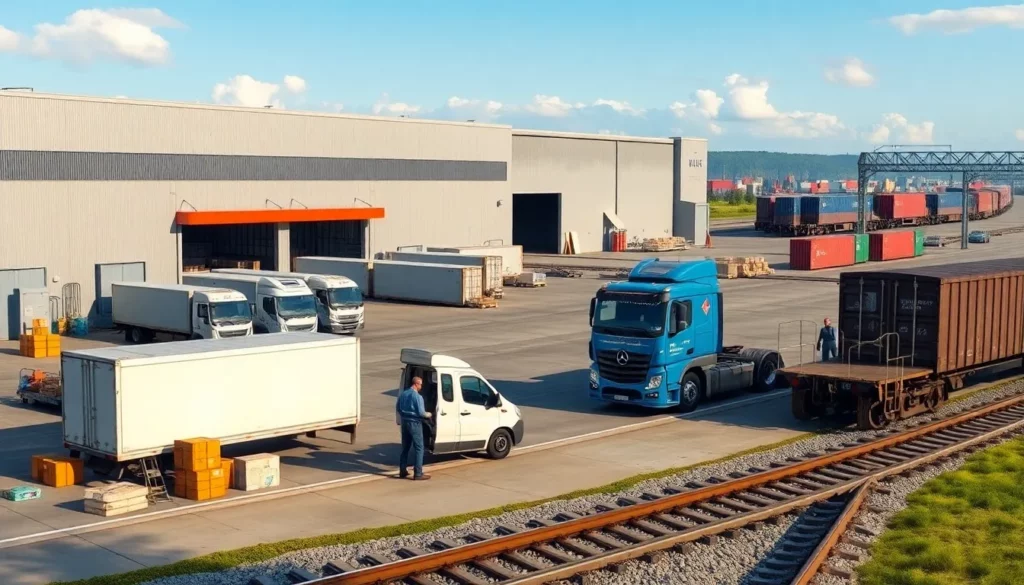
Phase 3: Cargo Transit and Export
Arranging Pickup
Coordinate factory or port pickups with suppliers and forwarders. Account for inland transit delays.
China Export Clearance
Submit accurate HS codes, invoices, and licenses. Budget time for potential inspections.
Real-Time Tracking
Use forwarder platforms to monitor vessel/flight status and customs progress.
Tips: Automated notifications help you address delays proactively.
Phase 4: Canadian Customs Clearance
Import Declaration
Brokers submit declarations with HS codes and values via CARM. Accuracy prevents penalties.
Paying Duties/Taxes
Provide security bonds and pay GST/HST based on CBSA assessments.
Managing Inspections
Respond promptly to CBSA requests to minimize delays.
Important warnings: Inaccurate declarations can trigger costly audits.
Phase 5: Final Mile Delivery
Inland Transportation
Arrange rail or truck transport based on cost and destination. Montreal reduces eastern Canada costs.
Unloading
Schedule warehouse appointments and verify cargo condition upon receipt.
Final Inspection
Check goods against orders and document discrepancies for claims.
Best practices: Archive documents for audits and future reference.
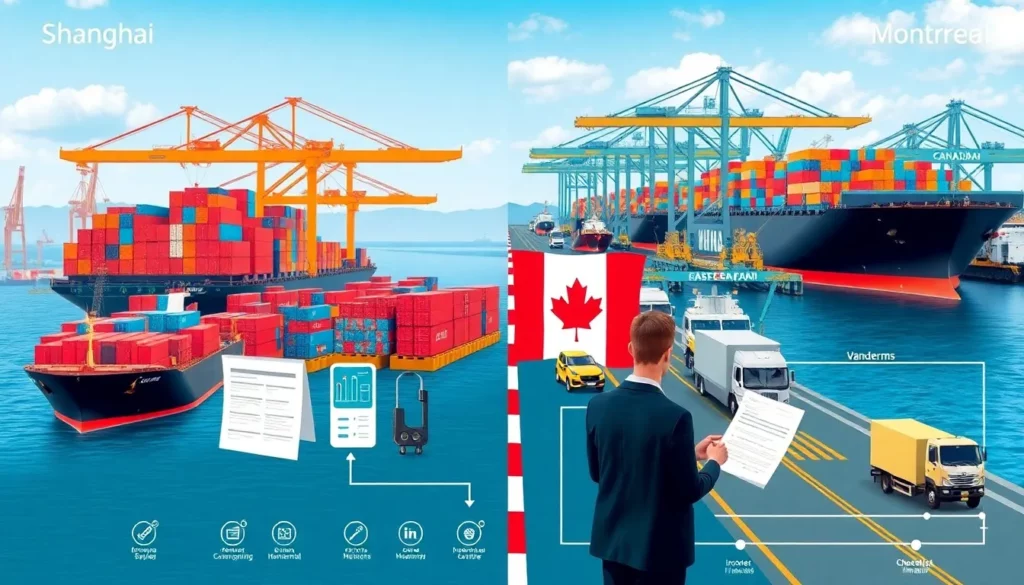
Conclusion:
Plan meticulously, choose reliable partners, and stay compliant to ensure smooth China-to-Canada shipments. A professional can tailor your strategy, optimize costs, and navigate regulations. Regular reviews uncover savings and efficiencies.
Importer Checklist
- Choose shipping methods based on cost, time, and urgency.
- Partner with experienced forwarders and brokers.
- Maintain accurate documentation and records.
- Stay updated on trade regulations.
Frequently Asked Questions (FAQs)
1. What’s the most cost-effective shipping method?
Sea freight (LCL for small shipments, FCL for large) offers 70–80% savings over air freight, though transit takes longer.
2. How long does customs clearance take in Canada?
Routine clearance takes 1–3 days; complex cases or inspections may take 5–10 days.
3. Do I need a customs broker?
Not mandatory, but brokers prevent errors and streamline compliance, especially with CARM.
4. What are Incoterms, and which is best for beginners?
Incoterms define buyer/seller responsibilities. FOB balances control and ease for first-time importers.
5. How do ports and destinations affect costs/times?
Shanghai/Shenzhen offer competitive rates; Vancouver is fastest for western Canada, while Montreal suits eastern destinations.

